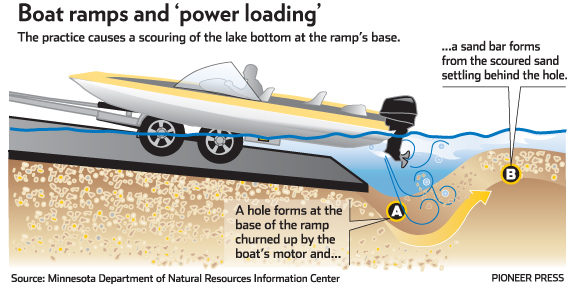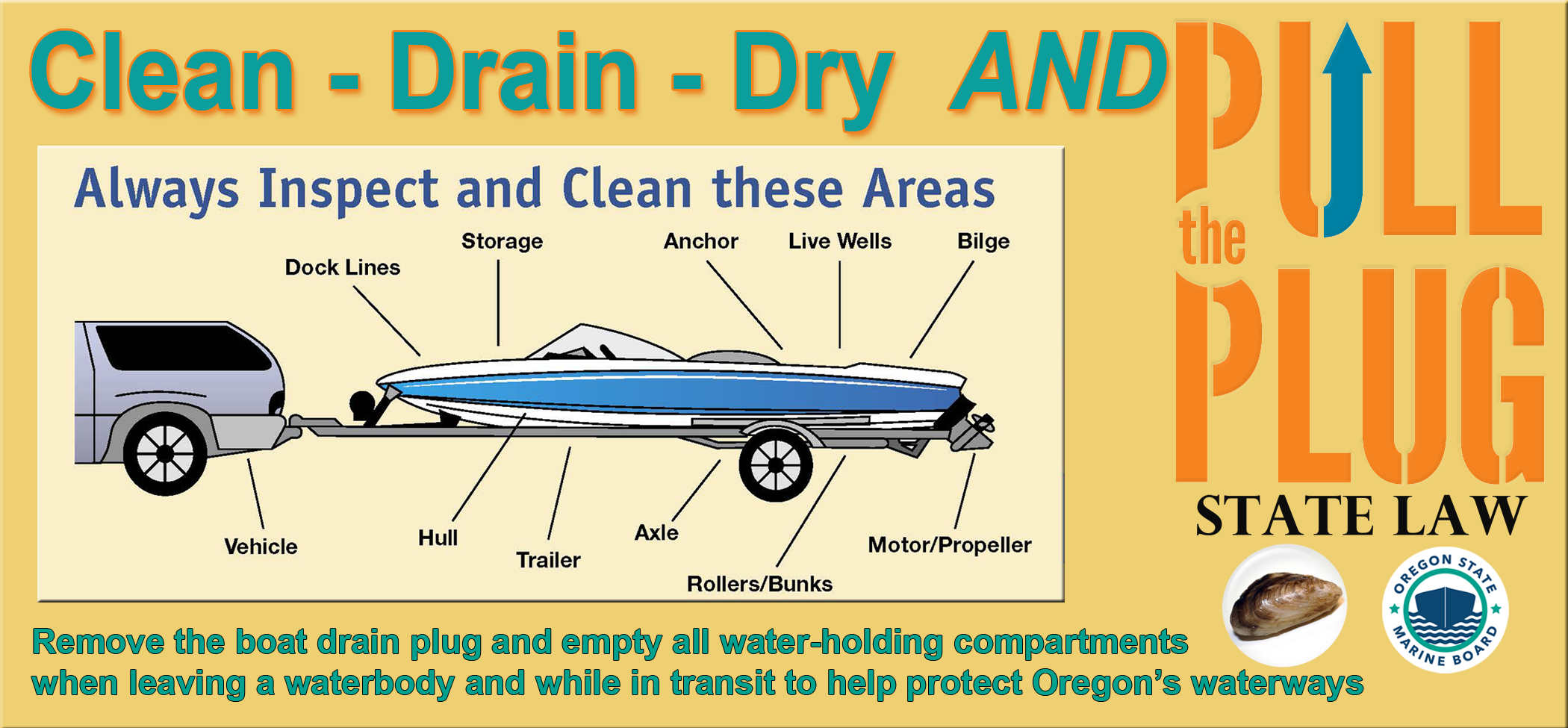A little ramp etiquette goes a long way and will help save time, headaches, and stress. Most importantly, fellow boaters will appreciate your efficiency!
Here's a video to help you learn the ropes. (Disclaimer: This video is being shared for educational purposes only and does not endorse or promote any products, services, or manufacturers. [OAR 250-010-0160)
Before Launching - Prep and Observe
Paddlers: Prep your gear near your parking location. Assess the trailered motorboat launch/retrieving traffic. You are free to launch from the launch ramp, but please give priority to trailered boats. If possible, carry down your boat and launch it from the shoreline.
Trailered motorized boaters: Before getting into line or approaching the ramp:
- Take time to transfer gear, food, supplies, other safety gear, and equipment from the tow vehicle to the boat.
- Remove tie-downs securing the boat to the trailer, but make sure the winch line is still hooked to the bow eye.
- This is a good time to install and tighten all drain plugs, especially the ones at the bottom of the transom.
- If necessary, hook up the fuel lines and pressurize them with a couple of pumps on the primer bulb.
- Check batteries to make sure they're charged.
- If your trailer lights are not waterproof, unplug the wiring harness between the trailer and your tow vehicle. This will prevent damage to your lights and blown fuses.
- Raise your outboard or stern drive so it won't scrape on the ramp.
- Tie at least one (preferably two) docking lines to the boat so that someone helping you will be able to control the boat after it's launched.
The last thing to do before getting in line is to take a few minutes to check out the launch ramp. Take note of how steep the ramp is, how deep the water is, and whether it is dry or slick with algae. Is there a dock to tie up to after launching or will it be necessary to beach or anchor your boat?
Check out the parking area, too. Some facilities have enough room for your vehicle and trailer, while others require you to park the trailer in one area and your vehicle in another. Knowing this in advance can save you time and confusion.
Launching your boat
When it's your turn to launch, now is not the time to practice your backup skills. You should have already spent a few hours in an empty parking lot polishing your skills beforehand. If someone in your party is more experienced, let them handle the launch. On multiple-lane ramps, be sure to stay in your lane. If it's your first time at the lake this season, don't get discouraged if you're a little rusty. Just stay cool, go slowly, and keep your sense of humor.
Experience will tell you how far to back down into the water. A good rule of thumb is to stop when the step in front of the trailer fender is even with the water level. Set the parking brake on the vehicle and you're ready to launch.
A properly fitted trailer will allow a boat to launch itself. But be careful on steep ramps because a roller trailer might launch your boat before you're ready. To begin, grab the winch handle before switching the ratchet mechanism to “off" and then letting out the line. Otherwise, you may not be able to stop the spinning handle before the boat takes all the line. Not all boats use trailers with a winch, like wake boats.
It's paramount for these boats to have dock lines ready to go. It's recommended wake boats only launch from boating facilities with boarding docks.
Sometimes you may need to give the boat a push to get it started, but if you're still having trouble, try backing the trailer another foot into the water. In some cases, if the ramp isn't too steep, you may want to power the boat off the trailer using the outboard or stern drive. Just make sure there's enough water for prop clearance and that the intakes are submerged. Apply power slowly and smoothly and just enough to get the boat moving off the trailer. Once the boat is afloat, tie it to the dock, park the trailer and let the next person have their turn. Turn on your exhaust blower (ventilation system) for four minutes to remove any gas vapors before turning over the engine.
Retrieving your boat
At the end of the day, retrieving your boat is pretty much the reverse process of launching. There are a few precautions to keep in mind. As a courtesy to other boaters, don't tie up the ramp while retrieving your vehicle and trailer. Tie your boat to a dock or circle around the waterbody until the trailer has been positioned on the ramp.
When running the boat onto the trailer, concentrate on keeping the boat centered. Most trailers are designed to keep the boat centered. A little power may be needed to get the boat as close as possible to the winch stand. Do not “power load" onto the trailer. A fast or prolonged throttle onto the trailer can undermine the toe of the ramp, creating a hole and a sandbar on the other side. Trailer wheels get stuck, and boats being retrieved can hit the hull on shoaled-up areas. Wakeboard boats and their trailers don't have winches, so “popping the throttle" gently enough to get the boat centered is necessary. Just remember an undermined ramp costs, in many cases, tens of thousands of your boating dollars to fix. The best fix is prevention in the first place.
 Also, it is now state law to "Pull the Plug" and allow all water-holding compartments to fully drain after use and while in transit. After retrieving, be sure to remove your drain plug. Also, open any water-holding compartments and remove any aquatic vegetation (dump it in the trash can) from the trailer (wheels, rails, bunkers, etc.), stern region, and motor(s).
Also, it is now state law to "Pull the Plug" and allow all water-holding compartments to fully drain after use and while in transit. After retrieving, be sure to remove your drain plug. Also, open any water-holding compartments and remove any aquatic vegetation (dump it in the trash can) from the trailer (wheels, rails, bunkers, etc.), stern region, and motor(s).
Lend a Hand
If a fellow boater looks like they need help at a ramp, ask them if there is something you can do for them. Avoid personal attacks and focus your interaction on how you can help. Often times grabbing a dock line, helping a new boater out, or assisting each other when ramps get busy and windy, makes the experience better for everyone.